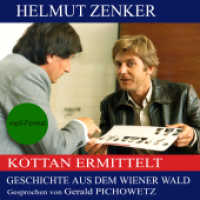- ホーム
- > 洋書
- > ドイツ書
- > Mathematics, Sciences & Technology
- > Technology
- > mechanical engineering & production engineering
Full Description
This book offers a comprehensive breakdown of rubber industry procedures, serving as an invaluable resource for enhancing professional literacy. It covers measurable technological parameters, manufacturing processes, and metallurgy of the materials required for producing high-value rubber-metal machine components. These components find wide applications in the engineering industry, including buffers, vibration damping elements, pipe expansion joints, and silent blocks (vibration dampers vulcanized between steel pipes).
The manufacturing of modern machine components necessitates meeting high technical standards and ensuring flawless performance throughout their lifetime. This goal is accomplished by manufacturing components to the required technical parameters with consistent quality specified during the design stage.
Unfortunately, scientific descriptions of rubber-metal bonding technologies often lack the detail required for practical application. This book addresses this gap by presenting extensive research conducted by Renner Rubber Products, a key player in the rubber market in Central Europe, drawing on practical experience from the Centre for Security Studies at the Hungarian University of Agriculture and Life Sciences.
The book provides a set of technological specifications for rubber-metal bonding based on experiments, measurements, calculations, and proven research results.
A noteworthy aspect of the book is that it is the result of close scientific collaboration between academia and industry-leading players, resulting in a highly qualified product applicable in science, academia, and industrial production alike. It serves as a valuable tool for anyone in the engineering industry seeking to enhance their understanding of rubber industry procedures and produce high-quality rubber-metal machine components.
Contents
Chapter 1: Introduction.- Chapter 2: Technical Basics.- Chapter 3: Elastomers.- Chapter 4: The Theory of Rubber Compounds and Polymer Production.- Chapter 5: The Theory of Vulcanisation.- Chapter 6: The Properties of Vulcanisates.- Chapter 7: Rubber Manufacturing Operations.- Chapter 8: Springs.- Chapter 9: Production of Rubber Springs.- Chapter 10: The Effect of Technological Parameters on the Tensile Strength of Rubber Springs (After Renner, Based on Experimental Design).- Chapter 11: Elemental Analysis of the Rubber-Metal Interface.- Chapter 12: Summary.








